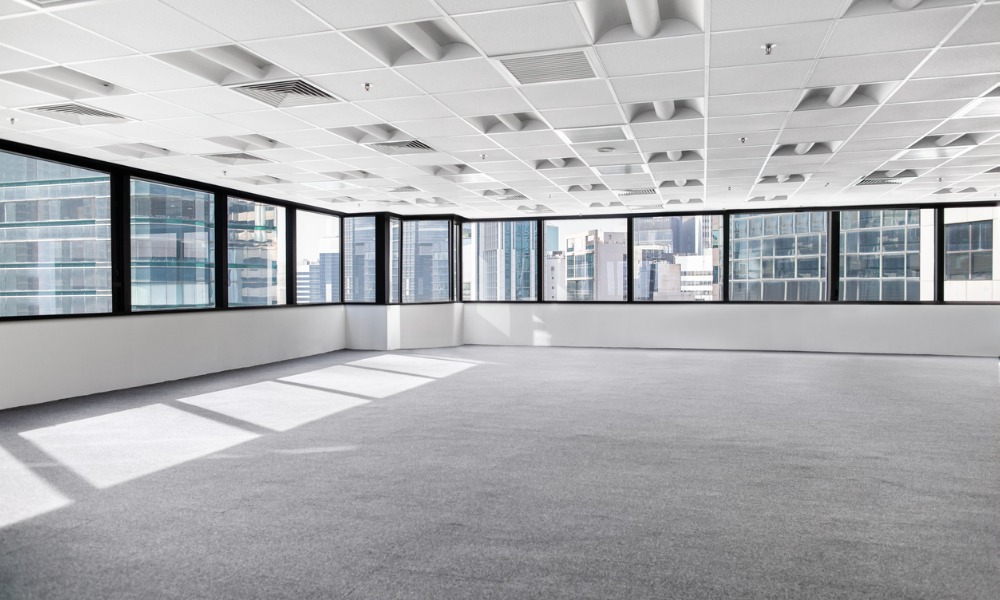Sector saw double-digit rental growth following the pandemic, but where can investors find opportunity now?

Industrial was probably the leading light for Canadian real estate investors through most of the past four years. A healthy and growing market was turbocharged by the COVID-19 pandemic, as demand for e-commerce pushed rental growth rates sky high. Even more recently, in 2022 industrial rental rates increased by over 30 per cent in key Canadian markets, in 2023 the market saw growth at roughly 12 to 15 per cent. There was almost no vacancy in Canada’s 1.7 billion square feet of space, especially in the GTA which houses about half of that industrial real estate.
Now, however, the economy is slowing and new properties are coming online. Vacancy rates have risen slightly, rental growth rates have slowed, and tenants have a little bit more breathing room. Even as rapid growth plateaus, Allan Perez is looking favourably at the industrial real estate sector. Perez is the CEO and Co-Founder of CanFirst Capital Management, which specializes in industrial real estate. He explained some of the dynamics within this sector that continue to make it an attractive space for Canadian investors, and outlined how advisors can capture some of the opportunities still in this market.
“Like every investment sector in the world, this is a cyclical business. The beauty of this sector, though, is that it’s very easy to turn off the supply tap, because it only takes six to nine months to build an industrial building. You don’t have to look that far ahead to say ‘I’m just going to put this on hold for now,’ and that’s what’s happening in the marketplace.”
While vacancies are still largely below their roughly five per cent ‘equilibrium’ level, Perez is optimistic that this will remain a landlord’s market for the foreseeable future. The near-zero vacancy rates we saw post-pandemic, he says, weren’t healthy, but the levels we’re at now appear to be healthy and in balance.
The speed at which industrial units can be constructed, too, means the sector can adjust quickly to interest rate fluctuations. Projects can begin and end well within the timeframe of an interest rate cycle, meaning builders can select the right moment when financing is cheap and demand is high. They can elect to hold back when rates rest higher.
While those traits may make industrial attractive in the long-term, Perez sees short-term opportunities despite the macro-level plateauing of rent increases. Income levels are strong, even if they’re not growing, but there are also significant arbitrage opportunities that he sees on the market now. Buildings with leases signed five years ago are coming up for renewal at far higher rents. Perez says that he and his team at CanFirst are actively securing these arbitrage deals and securing deals at near double the rental rates that some tenants had locked in five years ago.
Because of the fundamental agility that Perez sees in industrial real estate, he doesn’t see major risks emerging from the sector itself. Rather, he notes that industrial tends to be as strong as the underlying economy. Canadian GDP growth numbers have been anaemic for a few quarters now and if that trend doesn’t reverse he sees a potential for further demand erosion. However, if an investor is more constructive on the Canadian economy, Perez sees a stronger case for industrials.
Within the broader universe of industrials, Perez highlights a few distinct areas that his firm prefers to focus on. In their growth funds, they typically acquire underperforming assets where his team can unlock value. In their income fund, for example, they look to secure strong tenants for a property — such as a recent 10-year deal with Loblaws to tenant an Edmonton distribution centre. Both funds, they note, have outperformed their target benchmarks on a total returns basis.
As advisors look more closely at real estate allocations, and reflect on the remarkable recent run in rental growth, Perez and CanFirst argue that even if rent growth has slowed, the fundamentals for industrial are strong and a specialist manager can now drive significant value at and above target levels.
“We’re one of the few pure-play national industrial players in this country,” Perez says. “A lot of the bigger players do a little bit of everything. But we started this company 22 years ago and this is all we’ve ever done. We live, eat, breathe, and sleep industrial. We’ve got a very entrepreneurial approach to our investment and we’ve managed to stick to our knitting through various cycles.”



